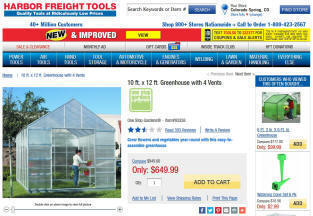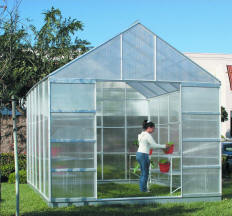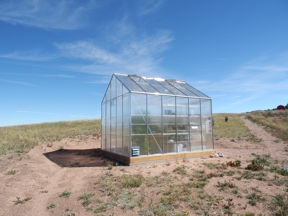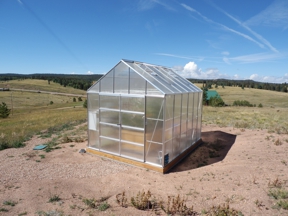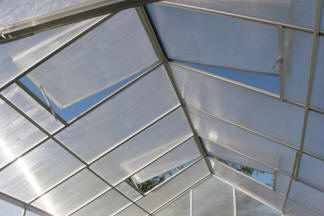

►Overview
● Sys Arch
● Vent Ctrlr
● Fan Ctrlr
● Eq Int Module
● Env Manager
● Results
● Future Plans
● Survey
Greenhouse Automation - Overview Note: We are currently investigating the marketability of the greenhouse automation components. Please take the survey (at the end of the greenhouse automation sections) to help us in this determination. Introduction The Greenhouse Automation project is comprised of a series of custom automation devices that I designed and built for the purpose of managing of the growing conditions within our residential greenhouse. Background In the summer of 2015, my wife and I assembled a Harbor Freight 10 ft. x 12 ft. greenhouse (Item # 93358).
We constructed a concrete footing for the structure and, after assembly, used 3/4" galvanized steel EMT tubing to put horizontal reinforcement midway up the walls, tie the walls together side to side, and place a diagonal brace at the top of each corner. We also doubled the number of clips holding the wall panels in the framing and fastened the panels to structure cross-members with gasketed sheet metal screws. All this was done as a precaution against the high winds we experience at our home (on occasion reaching 40-50 mph and even higher during what seem like microbursts).
Ventilation Issues
Other than the sliding door and the roof vents, there are no other airways provided with the greenhouse. For standard convection-based air circulation, the sliding door would have to be left open to some degree. Since there is no screen on the sliding door, leaving it open would defeat one of the purposes of the greenhouse, namely, protection of the plants from various critters (on our property we have ground squirrels, voles, and field mice that could readily invade the structure if given the chance). Our Challenges Our challenges in getting the most out of our greenhouse mainly stem from the kind of weather that we experience where we live. We are situated on the western slopes of Pike's Peak in the mountains of Colorado at an altitude of 9200 feet. As mentioned earlier, we have some considerable winds from time to time. Our growing season is understandably short--the first frost-free date is June 16th! Our air is very clear and we commonly have beautiful scattered clouds in the afternoon, which leads to sudden variations in solar heating for the greenhouse as the clouds roll by. Under these conditions, in order to stay within good growing temperatures in late Spring through early Fall, the venting and air circulation of the greenhouse must be able to respond to these environmental effects within a few minutes. In order to extend our growing season in early Spring and late Fall, heat needs to be captured using some sort of storage strategy to keep temperatures within acceptable bounds during the chilly nights. All of this needs to be accomplished without creating ways for critters to get in and without a need for minute-by-minute attention. Finally, with regard to the structural preservation of the greenhouse, some means of protecting the vent lids against wind damage is very desirable. Project Goals In order to address the challenges described above, we determined the following major goals for the project:
The temperature regulation objectives also lead to developing an automated means of:
Project Components The goals and tasks outlined above lead to the creation of the system components detailed in the subsequent sections:
|
||||||||||||
|
This page last revised on 05/05/2018 |
